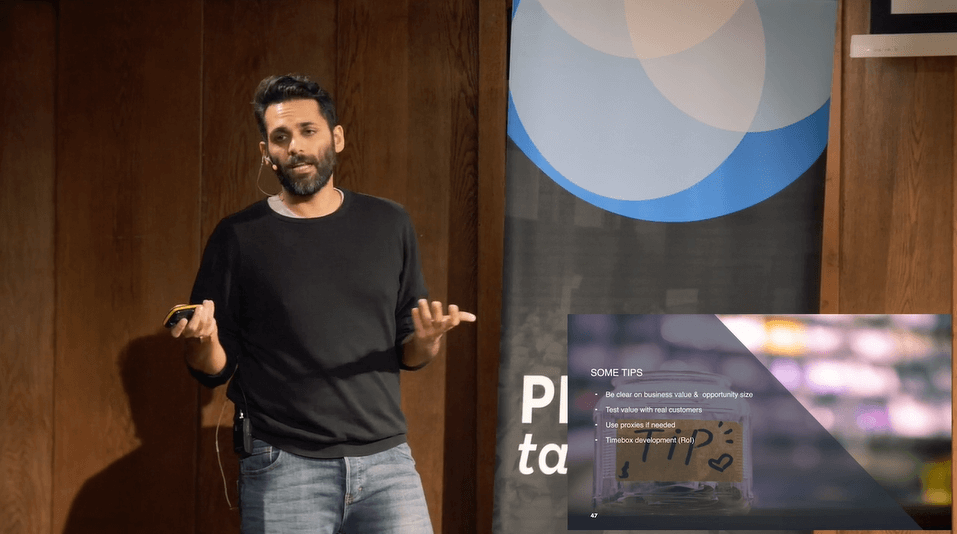In this ProductTank London talk Navin Nair, Product Consultant and Chief Product Officer of JustPark, shares some of the common mistakes and pitfalls he finds Product Managers make during the product discovery process.
Watch the video to see his talk in full, or read on for an overview of the common mistakes he highlights, including:
- Poorly defined scope
- Too quick to a solution
- Understanding commercial value
Poorly Defined Scope
Navin defines scope as six different sections that identify the:
- Target user
- Current problem
- Current workaround
- Proposed approach
- Success criteria
- Business value
He then explains some of the common problems around scope. For instance, he says, people tend to omit sections from their scope, such as success criteria. They provide a lack of detail, such as claiming that the solution is for “all users” rather than a specific segment. They also, too often, focus on the surface detail of the problem, rather than looking for its root cause.
Navin's Scope Tips:
- Just do it! Write a first draft, which doesn’t need to be perfect, and iterate from there
- Get feedback on your early versions of the scope instead of just the final one
- Document what you won’t be doing as this will help you to manage expectations of what is going to be delivered
Being Too Quick To a Solution
Navin defines the correct way to reach a solution as being to first understand the problem, only then can you begin to understand the solution and finally build the solution. However, the mistake he sees people often make, is to first come up with a solution, then find people to agree with them on it, and then to build it. This only results in a product that isn’t solving a problem at all.
Navin's Solution Tips:
- Conduct regular customer interviews
- If you’re not sure what questions to ask customers, reverse engineer them from open questions (e.g. What problem is preventing you from X?)
- Ask customers about what they’re trying to achieve in the real world, rather than what they’re doing with your product
Understanding Commercial Value
Historically, companies focused on building things that would deliver value for the business with little focus on the user, while more recently it’s more common for companies to build customer-first products that don’t deliver value for the company. Navin explains that a good product should provide value to both the customer and the company.
Navin's Value Tips:
- Write up the business value and opportunity size
- Test your values on customers – ask questions and act as if you’re selling to see how many people are actually interested
- Get an estimate of development costs and timebox that development
Final Takeaway
The consequence of making these common mistakes in product discovery is that you waste your time and money building a solution that doesn’t solve a problem. To get it right, keep Navin's tips in mind, be sure to do discovery yourself (instead of passing it on to someone else), find people to challenge your assumptions, and ensure you do product discovery continually as your product evolves instead of as a one off exercise.






